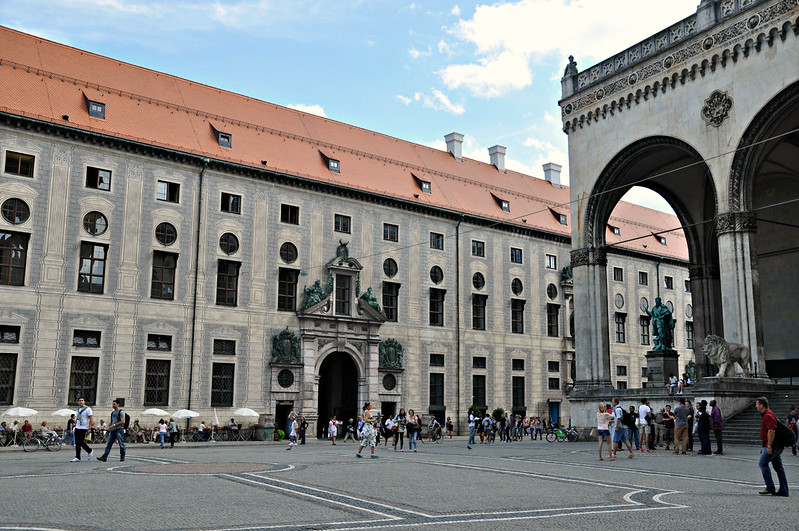
Ludwig I mandou construir a Odeonplatz em 1816 e é onde podemos encontrar alguns dos monumentos mais importantes da cidade cuja arquitectura é na sua maioria de inspiração italiana. O primeiro é o Residenz, o grande palácio que serviu como residência oficial da Casa de Wittelsbach (a familia real da Baviera) e cuja entrada oeste podemos contemplar desde Odeonplatz.
Ludwig I had the Odeonplatz built in 1816 and is where we can find some of the most important monuments of the city whose architecture is mostly Italian-inspired. The first is the Residenz, the great palace that served as the official residence of the House of Wittelsbach (the royal family of Bavaria) and whose western entrance since we can contemplate Odeonplatz.

Mas um dos melhores exemplos da influencia italiana na arquitectura da cidade no século XIX é o Feldherrnhalle, inspirado na Loggia dei Lanzi de Florença foi construido em homenagem ao exército Bávaro e duas das estátuas que podemos ver debaixo dos arcos da sua fachada são de importantes figuras militares: Johann Tilly e Karl Phillip von Wrede. Junto ás escadas o símbolo da Baviera representado por dois leões.
No lado direito está a Theatinerkirche (Igreja Theatina) cujo alegre tom de amarelo sobresai comparando com o resto da praça, foi construída por dois arquitectos italianos no século XVII. É da Odeonplatz que começa a rua de Ludwig uma das mais interessantes da cidade.
But one of the best examples of Italian influences in the architecture of the city in the nineteenth century is the Feldherrnhalle, inspired by the Loggia dei Lanzi in Florence it was built in honor of the Bavarian army and two of the statues that we see beneath the arches of the façade are of important military figures: Johann Tilly and Karl Phillip von Wrede. Along the stairs you can see the symbol of Bavaria represented by two lions.
On the right side is the Theatinerkirche (Theatina Church) which protrudes a cheerful shade of yellow compared to the rest of the square, it was built by two Italian architects in the seventeenth century. Odeonplatz is the starting point for the Ludwigstrasse one of the most interesting streets of the city.
On the right side is the Theatinerkirche (Theatina Church) which protrudes a cheerful shade of yellow compared to the rest of the square, it was built by two Italian architects in the seventeenth century. Odeonplatz is the starting point for the Ludwigstrasse one of the most interesting streets of the city.
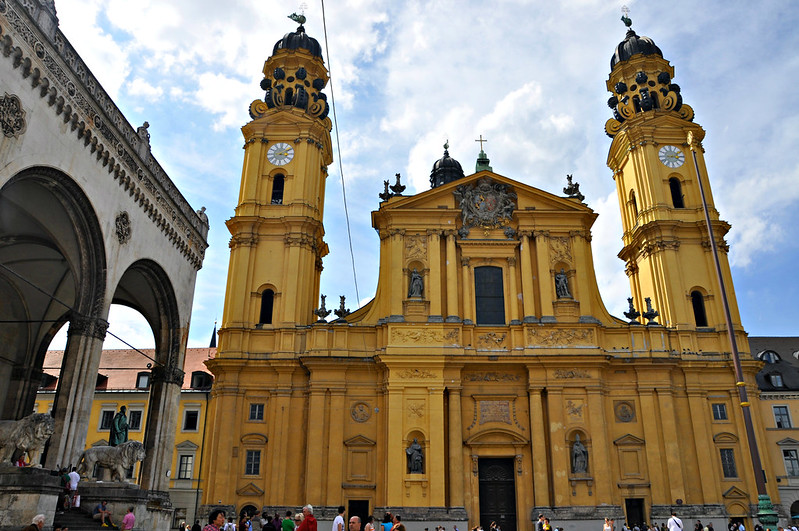
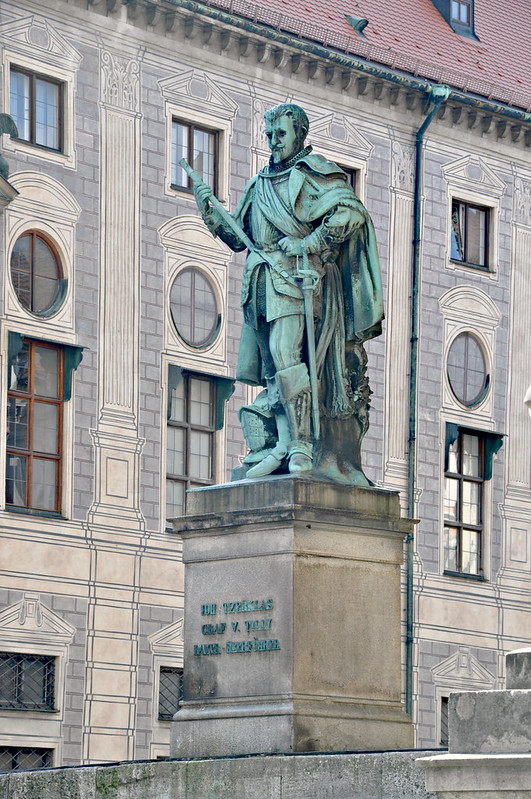
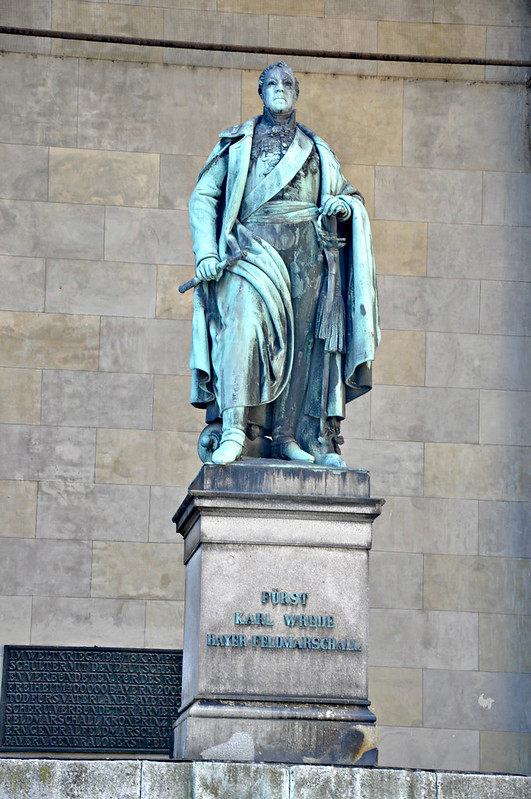
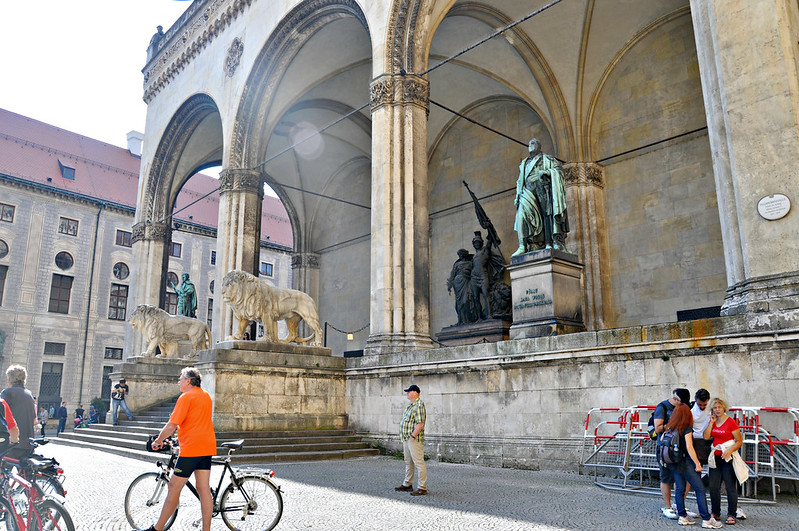
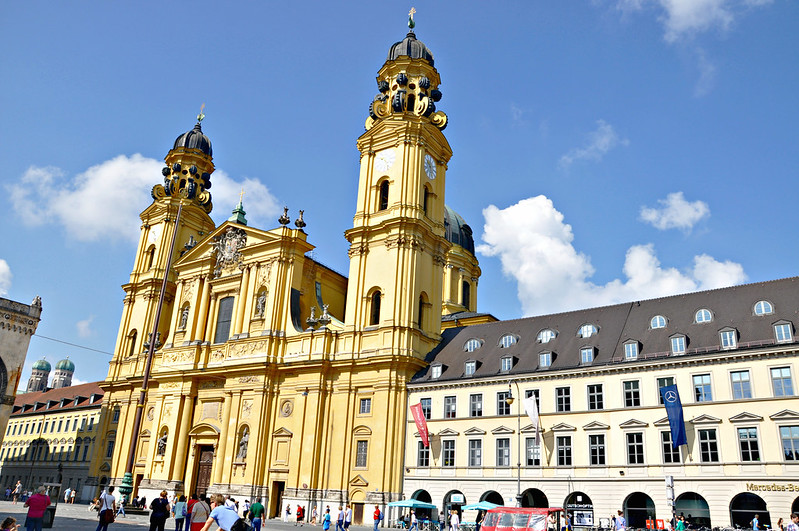
Metro: Odeonplatz
Our guide of:

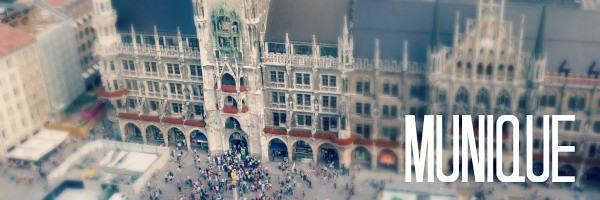
Sem comentários:
Enviar um comentário